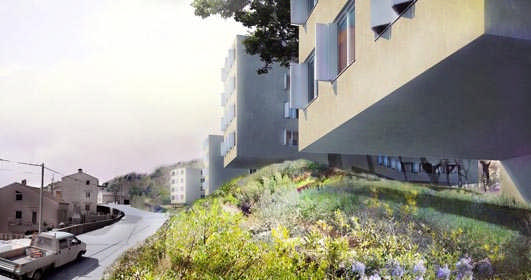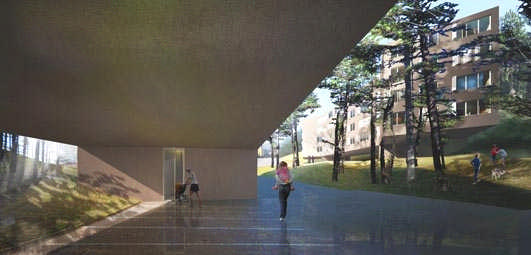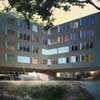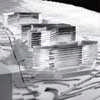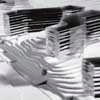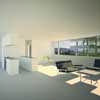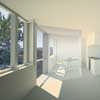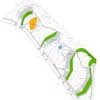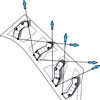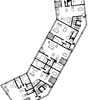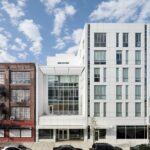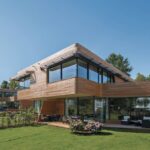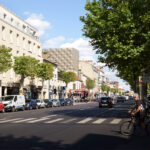Housing Rijeka, Croatian Residential Building, Architecture, Homes, Images
Social Housing in Rijeka : Croatia Residential Architecture
New Homes in Croatia – design by Zoka Zola Architect
4 Jan 2013
Rijeka Social Housing
Croatia
Design: Zoka Zola Architecture + Urban Design
Under Construction: Interpolation – Social Housing Development at the Edge of the City
Rijeka, Croatia
The project is our design-research effort to create a habitat where people, buildings and nature are balanced in their coexistence.
Our premise of a worth while effort:
If for hundreds of years humanity focused on the ways to be independent of and eventually master nature, then during this century humanity will focus on the ways to come to an understanding on how to be part of nature.
With this project for social housing we pose fundamental questions about the expansion of the city: What is the right architectural, ecological and urban design response to building the required dense development on this site that up until now has been be a green zone? More precisely: How to re-define ideas of how to design the conditions of the EDGE OF THE CITY?
The requirements of this 63,000 sq.ft. project for social housing are to design 80 condominiums in 4 buildings each on its own newly formed lot. In addition we are to provide required parking spaces, a children’s playground, park areas and fire lanes to reach each condominium. The condominium sizes and all room areas are specified, as is a wide range of apartment types and sizes.
The hilly parcel of land is located right on the edge of the city of Rijeka and bordering a large forested area. The entire site is a habitat for a dense forest that is green, wild and varied in species. It is clear that the site was a green zone until now.
The given qualities of the site are: the forest, the topography of the site and the top of the hill overlooking the city. We decided to keep these qualities as key of the new development with the buildings defining the relationships between human habitat and natural habitat.
We call this project INTERPOLATION, which in architectural vocabulary usually means insertion of a building in a tight and mature city fabric, but this time we mean Interpolation of building INTO THE NATURE. Incidentally, interpolation is also a mathematical term for how we defined the location and the shape of the buildings based on the topographic contours of the site.
Our strategy is to work with and take advantage of the complex topography of the site. We started by finding locations where land is at the same elevation as the two surrounding streets and from there to follow the topographical contours with the building. This strategy is the only way to ensure minimum disturbance of the topography, which in this case means the minimum disturbance of the soil and consequently of the forest. But since the topography of the site is so extreme, we “interpolated” the topographic curves that we have chosen in order to reduce them to four-point polylines. These polylines inform the building shapes with two “bends” each (two building cores) and three variable lengths between these polyline points. This allows a very flexible yet rigorous system to accommodate many different topographical situations and also the many desired apartment sizes.
To understand the importance of preserving the ground on which the trees grow it is important to know that the soil on this land is bare lime stone (just as along most of the Croatian coast). We found that the trees grow in this ground because 50 years ago pine trees were planted in order to produce soil, which allowed other species to seed, grow and produce more soil, thus creating the basis for the forest’s ecological system. Therefore bulldozing any part of the site destroys this still young but well established system.
Further the buildings are lifted off the ground with empty ground levels which allows the ground to flow freely underneath and between the buildings. The entire site and its surrounding, which is the edge of the city, is perceivable; the contact between city and nature is tangible and in this case – inhabitable.
By choosing to place the buildings perpendicular to the edge of the city every condominium will have a view of the city and the forest, which are essential to this housing type that offers its inhabitants small and affordable, yet functional spaces. An additional objective is to give all condominiums a view of the Adriatic Sea. Our building typology of double sided units and lifting the buildings off the ground allows a view of this gorgeous sea from every single condominium. For people of costal cities in Croatia, the view of the sea is the most prized non-material element of their dwelling.
Project context:
We won this invited, open and anonymous competition for affordable housing in Croatia in August 2008. The national subsidized housing program of Croatia selects proposals and architects based on anonymous architectural competitions with an emphasis on the quality of the urban and architectural solutions of the winning entries. After years of delay due to complicated property rights issues, political changes and a failed construction bid, construction has finally started in September 2012. Completion is scheduled for end of 2013.
Social Housing in Rijeka images / information from Zoka Zola architects
Zoka Zola Architecture + Urban Design
Location:Rijeka, Croatia
Architecture in Croatia
Croatia Architecture Designs – chronological list
Croatian Architecture
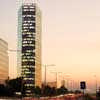
image from 3LHD
Contemporary Housing
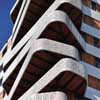
photograph © Boris Zeisser
Another design by Zoka Zola Architecture + Urban Design on e-architect:
Bird Island Zero-Energy Home – Rafflesia House, Sentul Park, Kuala Lumpur, western Malaysia
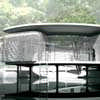
picture from architect
Bird Island Design
Another Rijeka building on e-architect:
Aula Ivana Pavla II
randic-turato architects
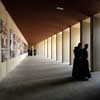
photograph from architect
Aula Ivana Pavla II
Comments / photos for the Social Housing in Rijeka page welcome
Social Housing in Rijeka – page

